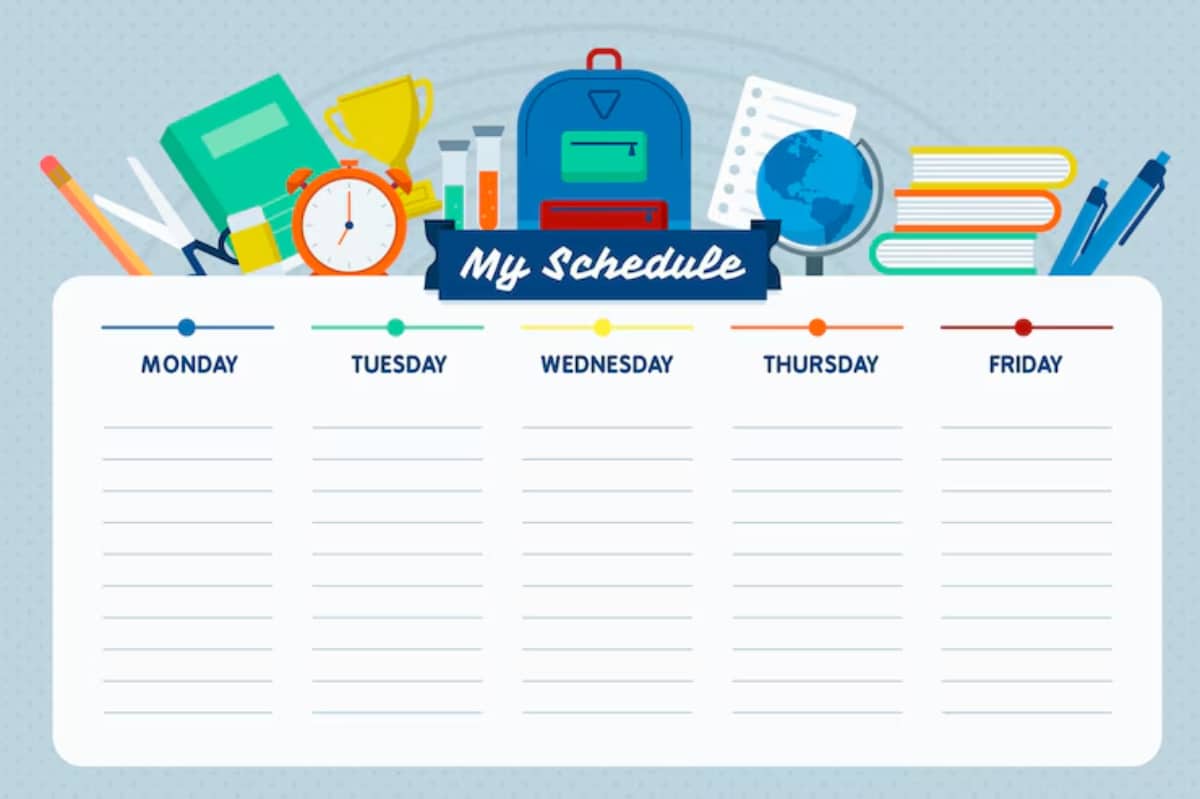
Year-Round Homeschooling: Pros and Cons
Homeschooling offers flexibility that traditional schools can’t always provide, and one of the most talked-about options is year-round homeschooling. But what does that mean? And more importantly, is it right for your family?
A year-round homeschool schedule spreads learning across the full calendar year, rather than following the typical September-to-June school format. It usually includes shorter breaks more frequently, instead of one long summer holiday.
For families new to the idea, year-round homeschooling may sound like a dream come true or a nonstop grind. This post explores this model’s real-world pros and cons, offering a clear look at how it works and who it might best suit.

What Is Year-Round Homeschooling?
Year-round homeschooling doesn’t mean teaching every day of the year. Instead, it means taking a different approach to homeschool scheduling, often breaking the year into smaller chunks like six weeks of learning and one week off.
Some families follow a 4-day-a-week model, allowing for more extended weekends. Others stick to a traditional 5-day week but take shorter holidays more frequently. You can shape it to fit your lifestyle.
The goal? Maintain momentum while giving kids (and parents) regular downtime.

Pros of Year-Round Homeschooling
1. Less Learning Loss
One of the biggest arguments for this approach is that children retain more information without long breaks. You won’t spend weeks re-teaching material every September.
- Kids revisit key subjects often, helping with long-term retention.
- You reduce the “summer slide,” especially in reading and maths.
- Frequent breaks help kids stay refreshed without forgetting skills.
2. More Consistent Routine
Many children thrive on structure. With year-round homeschooling, your family keeps a steady rhythm instead of stopping and starting throughout the year.
- Predictable schedules can reduce anxiety or behavioural struggles.
- Parents find it easier to balance household routines with schoolwork.
- It keeps momentum — no need to “restart” after a long summer.
3. Custom Breaks That Work for Your Family
You don’t have to travel during peak school-holiday times. Want to visit family in October or take a camping trip in March? You can.
- Save money by travelling during off-peak seasons.
- Enjoy less crowded destinations.
- Tailor your breaks around real-life events or your parents’ work schedules.
4. Better Time Management
A year-round plan offers flexibility if something unexpected happens. Illness, moving house, or a new baby? You can adjust your learning schedule without “falling behind.”
- Easily reschedule missed days.
- Spread out heavy subjects for better focus.
- Include real-life learning like cooking, gardening, or volunteering.
5. Encourages a Lifestyle of Learning
With a flexible homeschool year, learning becomes a natural part of life. Instead of viewing education as something between set months, it becomes woven into everyday living.
- Encourages curiosity beyond textbooks.
- Builds strong study habits throughout the year.
- Supports hands-on, project-based learning with fewer time constraints.

Cons of Year-Round Homeschooling
1. Less Downtime for Parents
Let’s be honest—homeschooling takes energy. Without a long summer break, parents may feel like they never have a full pause to recharge.
- Planning and teaching become ongoing tasks.
- Harder to take extended time off without disrupting the schedule.
- Burnout can creep in without clear breaks for the educator, too.
Tip: Schedule intentional “parent weeks off” every term to recharge.
2. Limited Shared Time with Friends or Family in Traditional School
If cousins or neighbourhood friends are on a traditional school calendar, your child may miss out on social time during long summer holidays.
- Social interactions may be out of sync.
- Harder to join summer camps or group activities.
- May need extra planning to stay connected.
Solution: Plan joint activities during public school holidays or explore local homeschool groups for like-minded peers.
3. Harder to Track Progress Without a Clear Start and End
Traditional school years offer natural checkpoints: new grades, report cards, etc. With year-round homeschooling, it can be trickier to mark “progress” or shift between levels.
- You may need to create your assessment system.
- Transitioning between curriculum levels requires more planning.
- Without firm breaks, it’s easy to lose track of milestones.
Tip: Build in review weeks and celebration points (like finishing a maths level or reading goal) to mark achievements.
4. Curriculum Planning Can Be Complex
Not all curriculum providers design materials for year-round use. Adapting them can take time and creativity.
- Some lesson plans assume a 36-week schedule.
- You may need to modify pacing guides or split units.
- Subscription boxes or programmes may follow standard school calendars.
Solution: Choose flexible curricula or digital resources that let you move at your own pace. For more help, explore our post on how to DIY your homeschool curriculum.
Popular Year-Round Homeschool Schedules
Here are a few examples of how families structure a year-round homeschool calendar:
The 6 Weeks On / 1 Week Off Model
- Study for 6 weeks
- Take a 1-week break
- Repeat throughout the year.
- Leavesfor a more extended holiday in December or summer
The 4-Day Week Model
- Teach Monday to Thursday
- Use Fridays for field trips, art, science labs, or rest.
- Offers three-day weekends without long-term breaks
The 3-Term Model
- 3 blocks of about 12 weeks each
- 2–3 week breaks between terms
- More structured, like UK private schools
Each model offers different benefits, so experiment to see what works for your family’s rhythm.
Is Year-Round Homeschooling Right for You?
Every family’s needs differ, so reflecting on your goals, lifestyle, and energy levels is essential.
It may be a good fit if:
- Your child benefits from consistent routines.
- You value flexibility in your schedule.
- You want to avoid back-to-school stress every autumn.
- You enjoy short, regular breaks instead of one long summer.
It may not be ideal if:
- You rely on long breaks for travel, work, or family visits.
- You need a long pause for personal or health reasons.
- You prefer a clear “start” and “finish” to the school year.
Still unsure? Consider a trial run. Try a 6-week-on / 1-week-off model for one term and see how it feels. You can constantly adjust—that’s the beauty of homeschooling.
Finding a Schedule That Works
There’s no single best way to homeschool. Whether you follow a traditional school calendar or choose year-round homeschooling, the key is finding what helps your child (and you) thrive.
Think of your homeschool schedule like a puzzle. The pieces are your child’s needs, family rhythm, and educational goals. A flexible homeschool year gives you more pieces to work with, but you can still decide how they fit.
If year-round homeschooling means less stress, smoother learning, and a more peaceful home life, it’s worth exploring.
Looking to Personalise Your Homeschool Schedule?
If you’re leaning toward year-round homeschooling, check out our guide to creating your homeschool curriculum plan– it’ll help you build a custom schedule that suits your family perfectly.
Do you have questions or want to share your experience with year-round homeschooling? Leave a comment below- we’d love to hear from you!


